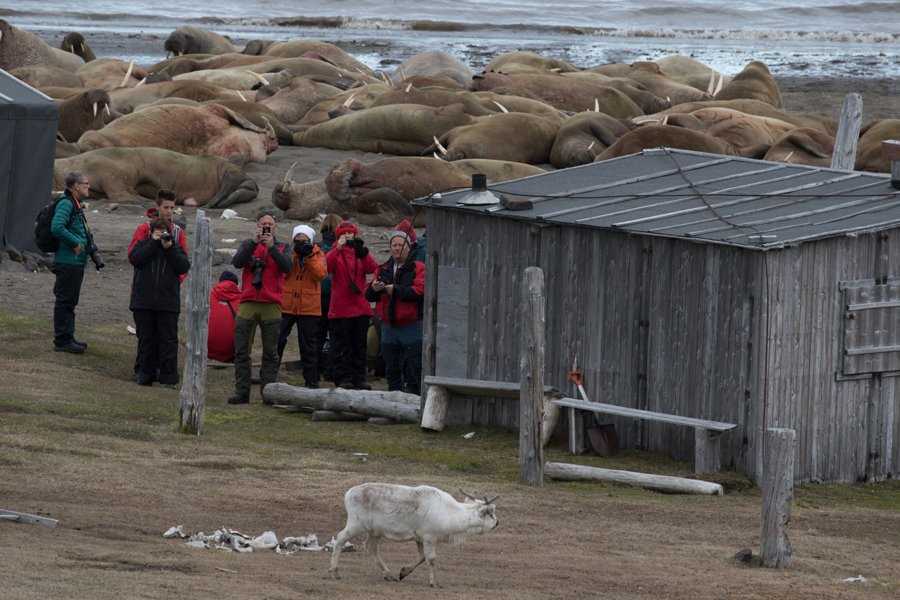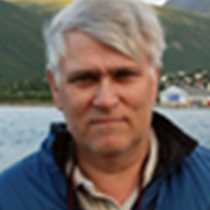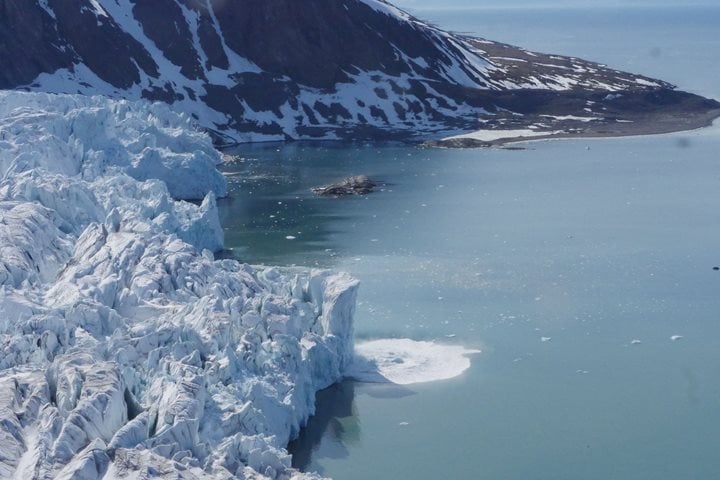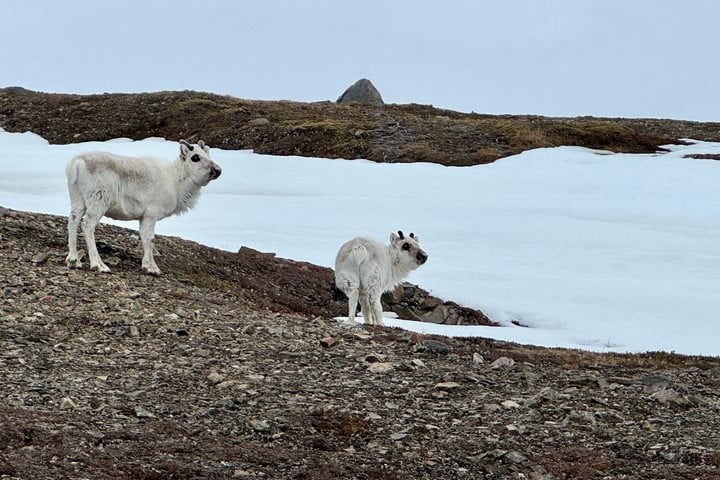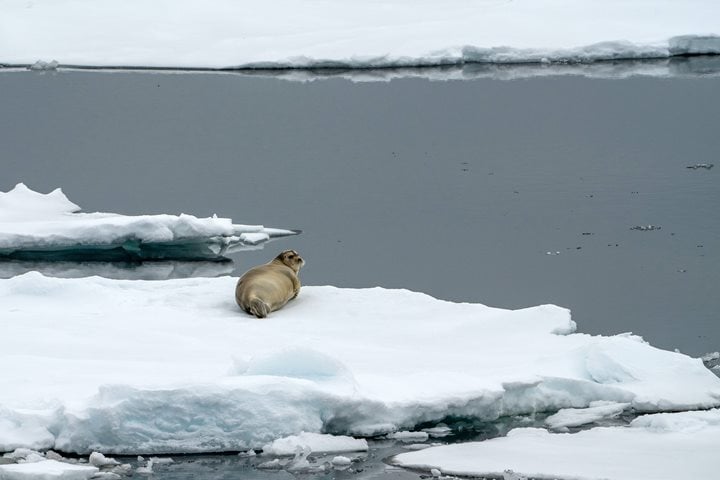We have now left the cold and dry side of the Svalbard Archipelago as we sailed in the early morning through Freemansundet, which separates Edgeøya in the south and Barentsøya to the north. Before breakfast, the ship was anchored off the northwestern tip of Edgeøya, at Kapp Lee, with the aim to encounter walruses and reindeer.
Soon, we had the fleet of Zodiacs in the water and our operation began. Between 50 and 100 male walruses use this haul-out site in the early part of the summer to digest thousands of clams they have eaten on the sea floor in Storfjorden. Today, there were about 50 to 60 males on the beach and as we were watching them, animals went into the water or came up to the beach. As we walked over to the beach to the watching point for the walruses it was a sad sight to encounter all the bones and skulls from an earlier period. Man has always had a very anthropogenic view and attitude on nature until very recent times…use it as an endless resource.
As the Europeans found ‘Spitsbergen’ in 1596, soon English and Dutch whalers were here in the area to harvest whales and seals for their oil. Walruses, with their tusks and blubber, were an addition to the hunting. The walrus is a gregarious animal and gathers in specific locations in large groups, but males and females are in separate groups. The whalers came back year after year and killed them by the thousands at the haul-out sites. The Atlantic walrus was on the verge of extinction, but it was finally protected both in the Soviet Union and Norway in the 1950s. Since the group of islands to the northeast of Svalbard, Franz Josef Land, houses more severe sea ice conditions, hunters never were able to get them there in such a numbers as around Svalbard. It was from the Franz Josef Land the walrus was able to re-populate Svalbard.
Today, the Barents Sea population is estimated to be at least 3,000 animals and over the last 10-15 years, walruses have been able to reclaim many of the former haul-out sites around Svalbard and today even females with pups can be seen in the area.
During lunch, the ship was repositioned farther south along the west coast of Edgeøya, to Diskobukta, a very shallow bay and the ship was anchored far out. The name has nothing whatsoever to do with the grand bay along the west coast of Greenland, named after a ship Disco. Here it was the English who named it Ducks Cove, which in the Dutch ears became “Dusko” and later as Scoresby made his publication (1820) was miswritten to “Disko.”
Soon, we were in the boats for a very long Zodiac ride to the shore, but the sea was calm and the good weather that has blessed this voyage was continuing. At first, the sites look very barren, but on shore we found an old trapper’s cabin with plenty of artifacts. Further up the shoreline, large whale bones created protected and nutrient-rich growing locations for plenty of flowers. Our local botanist pointed out some of these with photos later during our Recap.
The whale bones date much further back than any whaling activity in the area, since they are from whales stranded on the beaches many thousands of years ago. As the glaciers receded, land has rebounded. Farther up the beach and along the creek we entered a narrow gorge and it turned out to be almost like Hitchcock’s Birds. Several thousands of kittiwakes use the cliff faces to attach their nests, made of seaweed and grass. It was literately swarming birds over our heads. Of course, with all these birds a little Arctic fox family had its den nearby and is granted excellent feeding opportunities. Everybody got good looks of the fox. Some reindeer also made close approaches to us.
Too soon, it was time to head back to the ship, but a Recap and a good dinner were ahead. Sailing south through the large body of water named Storfjord, and tomorrow we should be back to the balmy Gulf stream waters along the west coast of Spitsbergen for more adventures.

